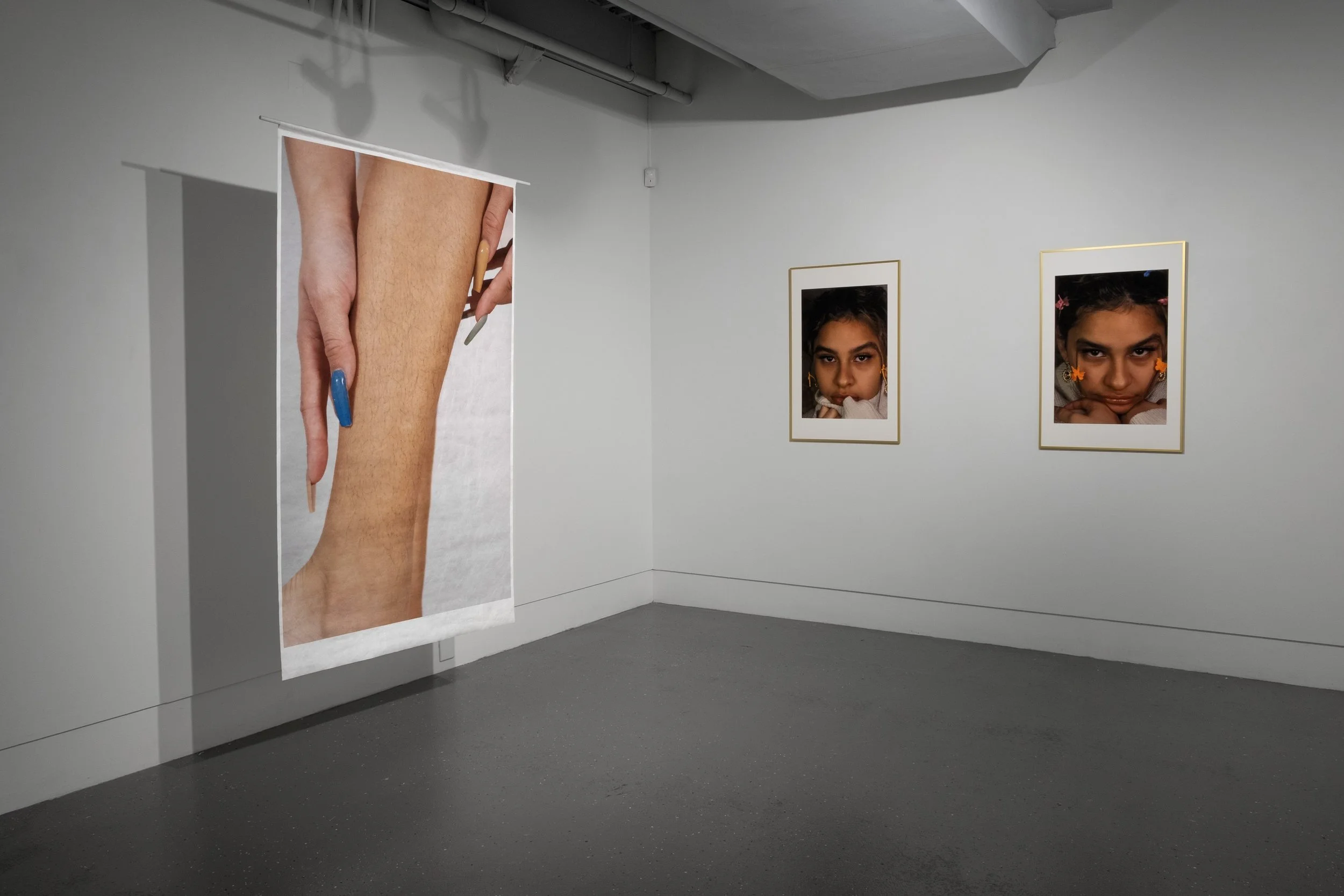Arregla Tus Cejas (trypich), Inkjet prints, 26”x25, 2021. Image courtesy of the artist.
Mechuda, a Spanish word used to refer to someone with long or particularly messy hair is a word that resonates with Vanessa Mercedes Figueroa quite deeply. For Figueroa, to be mechuda can sometimes feel like an identifier existing as a person of colour within the global north. The third space coined by Homi K Bhabha refers to hybrid cultural perspectives associated with both globalization and colonialism. As Figueroa’s work inhabits the third space, she has been continually exploring what it means to be ethnically coded existing within western spaces, and the navigation of these spaces as a person of colour.
Peluda has been an ongoing project surrounding celebration of ethnic body hair. Losing her hair over the last 4 years has led Figueroa to create a large body of work, all falling under the title Peluda, which is a Spanish word meaning hairy. Containing a variety of mediums, the iteration of Peluda exhibited in the Project Gallery experiments with collage and photography and involves attaching hair to inkjet prints. This series contains multiple inkjet prints of various parts of Figueroa’s body including her legs, underarms and arms with hundreds of individual hairs glued onto them.
Arregla Tus Cejas is a recent photographic endeavour, in which human hair was attached to Figueroa’s face using pros-aide. Arregla Tus Cejas translates to Fix Your Eyebrows, something she has consistently heard through adolescence having thick ethnic eyebrows, her mother having waxed them for her for the first time when she was 13 years old. These 26”x25” inkjet prints present a juxtaposition between the seriousness and sadness in her face, yet playful girlishness through the small bows and butterfly clips in her eyebrows.
Living and working out of Vancouver, Canada, Vanessa Mercedes Figueroa is an emerging artist of colour exploring identity politics, as well as the consideration of critical theory, her goal is to create a visual response and evaluation of current events affecting marginalized groups to set the tone for the sociopolitical period we are in, to allow for reevaluation and critical reflection. Figueroa’s work primarily functions through a diaristic lens exploring the notion of homemaking within the third space inhabited by children of immigrants of colour. Through performative and sculptural gestures, intervention of the longing and yearning for home while existing within the third space and making home your own. While living within the third space, existing is inherently uncomfortable and when living within those in-betweens, comfort and home are self-made.


